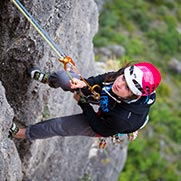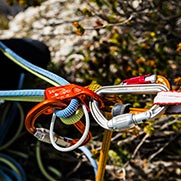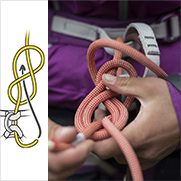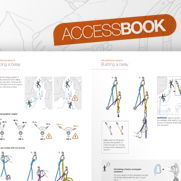Choice of lanyard end carabiner for a rock climbing or via ferrata lanyard
Warnings
- Carefully read the Instructions for Use used in this technical advice before consulting the advice itself. You must have already read and understood the information in the Instructions for Use to be able to understand this supplementary information.
- Mastering these techniques requires specific training. Work with a professional to confirm your ability to perform these techniques safely and independently before attempting them unsupervised.
- We provide examples of techniques related to your activity. There may be others that we do not describe here.
Key issues and risks
Fast operation is an advantage when changing anchors.
For via ferrata lanyards, the frequent clipping increases the risk of error and ergonomics is especially important.
The carabiner must be easily attachable to anchors of various dimensions.
The most important risks to consider
Recommendation on carabiner and accessories
Via ferrata
Wide opening that is suitable for cable, fast attachment for frequent operation.
Double action locking system that is ergonomic and secure.
Why this choice?
- The TWIST-LOCK system provides a good balance between speed of operation and security.
- The SCREW-LOCK system offers high reliability for for harsh environments (mud, sand, ice...).
Beware of the risk of forgetting to lock the sleeve at each manipulation. The unscrewing direction is always down, so the sleeve can become unscrewed in case of prolonged use on the same anchorage - The WIRE-LOCK system offers ideal ergonomics. It is used specifically for via ferrata, on Y-lanyards, to always have both arms connected to the anchor.
Positioning system
- The carabiner positioning system helps correctly position the carabiner, but also facilitates clipping as it rigidifies the lanyard/carabiner assembly.
Precautions for use
- When clipping, check that the carabiner is correctly positioned in the anchor, and that the sleeve is completely locked.
- Plan your movements during use to anticipate the movement of the carabiners and the risks of poor positioning.
- Make sure to have another lanyard clipped in, or another belay system, before moving your lanyard from one anchor to another.









